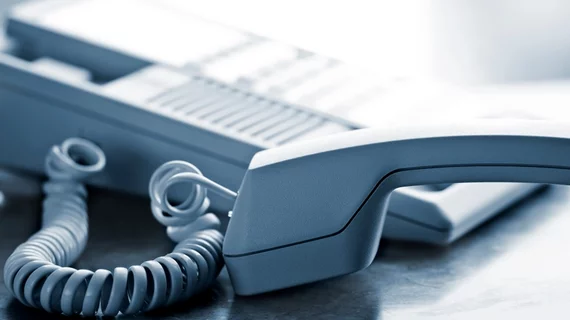The 4 most common reasons for imaging ‘callbacks’ in radiology
When patients are called back to an imaging center for further studies it can undermine trust in radiologists and waste precious healthcare resources.
Wanting to better understand this phenomenon, University of Michigan researchers pored over data from tens of thousands of MRI and CT exams to pinpoint root causes for such “callbacks.” While the numbers are scarce, some believe callbacks are radiology’s equivalent to wrong-site errors in surgery, and must be minimized to the fullest extent, Amber Liles, MD, and colleagues wrote Dec. 30 in the American Journal of Roentgenology.
“Callbacks frustrate patients and erode trust between radiologists, patients, families and referring providers,” she wrote. “Calling back patients for additional imaging because of insufficient or inappropriate imaging reflects poorly on our specialty,” added Liles, who is a radiology resident with Michigan Medicine.
The researchers built their case by studying more than 147,000 MRI exams and nearly 196,000 CT scans performed in four specialties (cardiothoracic, abdominal and musculoskeletal imaging and neuroradiology) at an academic medical center. Liles and colleagues found that callbacks were rare, occurring just 194 times during those thousands of tests conducted between 2015 and 2017.
Liles and co-authors found that four common reasons led to the majority of imaging callbacks:
1) Protocol errors accounted for 28% of callbacks, with about half attributed to a resident or fellow and the other half pinned to attending radiologists.
2) Inadequate anatomic coverage was the cause of about 21% of callbacks, with 50% occurring before the examination because of inadequate patient history or a radiologist error. Meanwhile, the other half occurred at the time of the examination.
3) Incomplete examinations drove about 13% of callbacks, including wrong plane of imaging or the missing use of contrast agents.
4) Perceived suboptimal image quality led to about 11% of callbacks, including poor signal-to-noise ratio, inadequate fat saturation, artifact from lack of metal suppression and nonspecific loss of signal intensity.
Liles et al. noted that the top three causes are all largely preventable, underlining the need to improve interaction on the imaging care team.
“These data indicate targeted improvement efforts may have a role in mitigating callbacks,” the team concluded. “Improving communication (i.e., referrer to radiologist to technologist), creating systems to make needed detail transparent, and ensuring correct information before an examination appointment are all domains to explore for optimization,” she added later.

